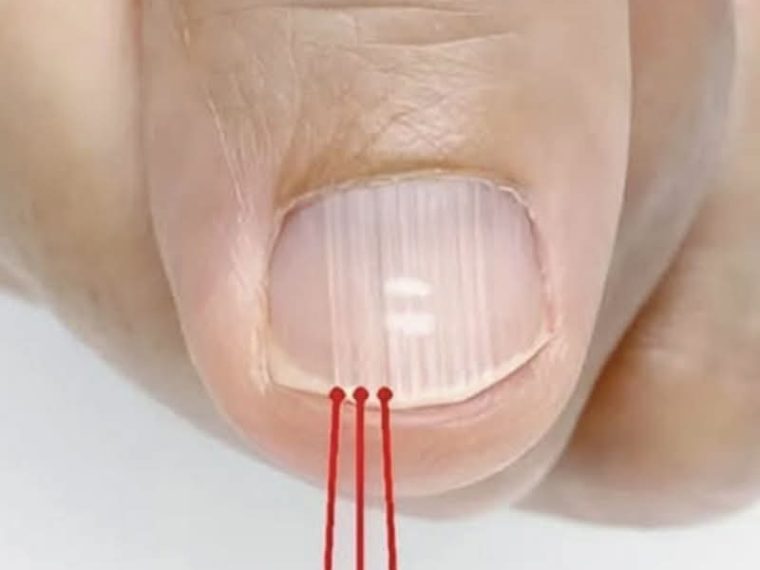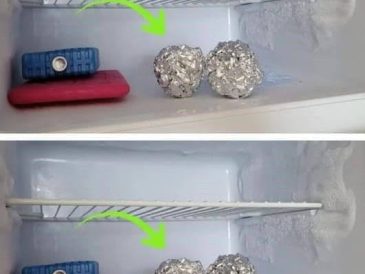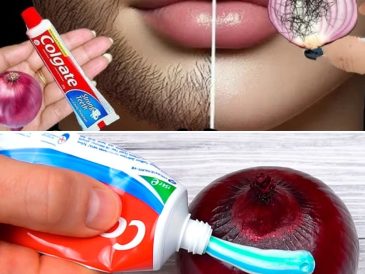Have you recently noticed thin, raised vertical lines running from the cuticle to the tip of your fingernails? These vertical ridges, also known as longitudinal nail striations, are surprisingly common—especially after the age of 40. While they’re usually harmless and a natural part of the aging process, they may sometimes point to nutritional deficiencies, dehydration, or even early signs of chronic disease.
In this article, we’ll explore the causes, prevention tips, and treatment options for vertical nail ridges, while helping you know when it’s time to seek professional help.
What Are Vertical Ridges on Nails?
Vertical nail ridges appear as linear raised lines that run lengthwise from the base to the tip of your nails. These lines can be subtle or pronounced, depending on your age, hydration levels, nutrition, and overall health.
They are often more visible under natural light and may feel rough to the touch. While they may not cause discomfort, they can affect the aesthetic appearance of your hands and nails, particularly if you’re concerned about signs of aging or skin and nail health.
What Causes Vertical Ridges on Fingernails After 40?
1. Natural Aging Process
The most common reason for vertical nail ridges is aging. After 40, the cell turnover rate in the nail matrix (the root of the nail) slows down. This can result in uneven keratin production, causing the surface of the nail to develop grooves or striations.
Just as wrinkles form on the skin or hair turns gray, nails go through structural changes due to reduced collagen and keratin synthesis.
2. Nail Dehydration and Environmental Damage
With age, nails often become more dry and brittle. Excessive hand washing, frequent use of alcohol-based sanitizers, and exposure to cleaning products or dish soap can strip natural oils from the nail surface.
When nails lack moisture and essential fatty acids, existing ridges become more pronounced. This is why nail hydration and the use of cuticle oils are recommended by dermatologists.
3. Nutrient Deficiencies
Vertical ridges on nails may signal a lack of key nutrients, especially:
- Biotin (Vitamin B7): Supports keratin infrastructure.
- Iron: Prevents spoon-shaped nails and weak nail beds.
- Zinc: Vital for cell regeneration and nail repair.
- Magnesium: Essential for protein synthesis and nail growth.
As we age, our ability to absorb vitamins and minerals from food decreases. If your diet lacks variety or if you’re dealing with gut health issues like IBS or low stomach acid, your nails may be among the first indicators.
👉 Search terms people use: “best vitamins for strong nails,” “biotin for aging nails,” “what causes brittle nails in women over 40.”
4. Thyroid Disorders or Hormonal Imbalance
Conditions like hypothyroidism or perimenopause can lead to changes in nail texture and thickness. Vertical ridges may appear alongside thinning hair, dry skin, and fatigue—all signs of hormonal fluctuation.
If these symptoms sound familiar, consider thyroid testing, especially if you’re a woman over 40.
5. Autoimmune or Chronic Illness
Autoimmune diseases like rheumatoid arthritis, psoriasis, and lupus can impact nail health. If vertical ridges are accompanied by painful joints, skin changes, or inflammation around the nail, speak to a doctor or rheumatologist.
When Should You Worry About Vertical Nail Ridges?
While vertical nail ridges are often harmless, they should be taken seriously if they come with:
- Dark discoloration under the nail
- Splitting, peeling, or flaking of the nail plate
- Swelling or pain around the nail
- Sudden thickening or brittleness
- Appearance of horizontal ridges (Beau’s lines), which may indicate a serious health issue
In rare cases, a dark line running down the nail could signal subungual melanoma, a type of skin cancer under the nail. Early detection is key, so don’t ignore persistent or changing symptoms.
How to Reduce and Prevent Vertical Nail Ridges Naturally
1. Stay Hydrated
Drink at least 8 glasses of filtered water daily to support cellular hydration and nail flexibility. Dehydration contributes to ridged, cracked nails.
2. Eat a Nutrient-Dense Diet
Focus on foods rich in:
- Omega-3 fatty acids (salmon, flaxseeds)
- Biotin (eggs, nuts, legumes)
- Zinc (pumpkin seeds, oysters)
- Iron (leafy greens, red meat, lentils)
- Vitamin A, C, and E for collagen production and nail strength
Consider taking a multivitamin for hair, skin, and nails if you’re not getting enough through your diet.
3. Moisturize Daily
Use a hand cream with shea butter, jojoba oil, or glycerin to protect the nail bed and cuticle. Apply a cuticle oil or vitamin E serum before bed.
4. Avoid Harsh Chemicals
Limit exposure to:
- Acetone-based nail polish removers
- Household cleaning agents
- Excessive hand sanitizer use
Wear rubber gloves when doing dishes or cleaning.
5. Use Gentle Nail Care Tools
Buff nails lightly (no more than once a week), and use a fine-grit nail file to shape. Avoid acrylic nails and gel manicures that weaken the nail plate.
6. Consult a Healthcare Professional
If you suspect a medical issue, request:
- Thyroid panel blood test
- Iron and ferritin levels
- Vitamin and mineral deficiency screening
Conclusion
Vertical ridges on fingernails after age 40 are usually harmless signs of aging, but they can also indicate deeper health issues, from nutritional deficiencies to hormonal imbalances. The good news? With the right care, attention, and lifestyle choices, you can protect your nails, boost their strength, and potentially uncover early clues about your overall health.
So next time you notice those lines, don’t panic—just pay attention. Your nails might be trying to tell you something important.




